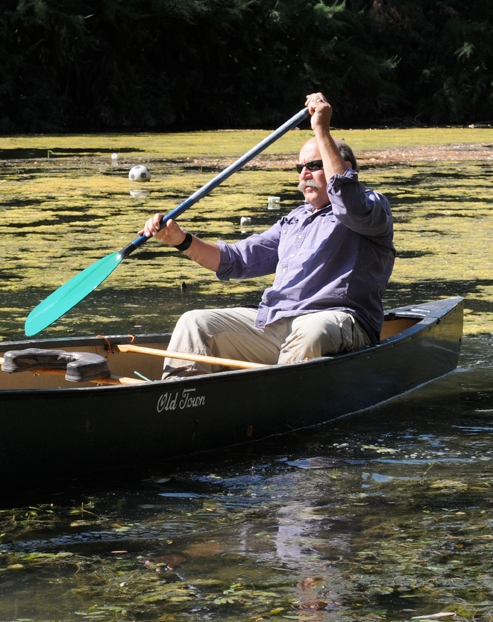
But the 15 University of California, Davis, students weren't skipping class.
They were taking it.
Slipping off their backpacks, they trekked down to the sluggish Putah Creek west of campus to try their luck catching sunfish, bass and other fish. They stood on the sun-dappled banks and cast their lines in the water as life itself floated by. A tadpole surfaced and darted back to the muddy bottom; a crawfish poked through the thick algae looking for prey; and dragonflies and butterflies lurked and glided across the creek.
An errant soccer ball, now a creek trophy, bobbed like a gigantic cork. Off in the distance, a boastful rooster served as the morning D.J.
It was the second week of classroom instruction on the UC Davis campus. But this classroom has no walls, no roof, no desks and no chairs.
For reels.
It's an annual animal biology class taught by forensic entomologist Robert Kimsey, an adjunct professor in the UC Davis Department of Entomology who is known for his excellence in teaching and commitment to students. For one day of the quarter, he takes his students, in groups of 15 and teams of two, fishing.
But it's much more than that.
His unique teaching approach starts with a “fish sampling field trip” that exposes his students to “the methods and practice of sampling fishes using common techniques from fisheries biology,” Kimsey said. It's one part of the scientific method: an hypothesis, experiments to test that hypothesis, analysis of the data, conclusions, and communication of the results.
“ABI50A is a two-unit animal biology laboratory course that introduces students to the scientific method as a continuous process,” said Kimsey, the recipient of several teaching awards, including the 2006 Outstanding Educator in the College of Biological Sciences, presented by the Associated Students of UC Davis.
“Bob is one of our most outstanding instructors in the Department of Entomology,” said Michael Parrella, professor and chair of the UC Davis Department of Entomology. “He is truly dedicated to the students and strives to get them to ‘think' in this and other outdoor classrooms rather than simply memorize and regurgitate facts.”
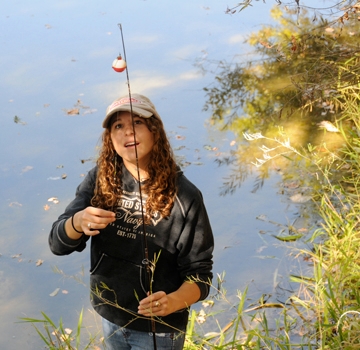
Some students had never fished before. No problem. Kimsey and his teaching assistant, Amy Morice, an entomology graduate student, showed them how, along with student and veteran angler Sarah Pereverzieu, who for the last three summers has worked as a nature guide at the Alisal Guest Ranch, Solvang, “One of my duties was to teach guests how to fish,” she said.
Expressly for the field trip, Kimsey obtained the proper permits from the California Department of Fish and Game that allowed him to use seines, wire fish traps or cages, and rods and reels. The day before the class, he paddled out in his canoe to set the fish cages. The next morning, at the edge of the creek, he discussed the history of fishing and demonstrated how to catch them. Students took turns paddling with him to check the fish traps.
All total, the 15 students caught two fish, several crawfish, a tadpole, algae, a tree branch, tree leaves and a rash. Stacy Williams of Orange, Calif., hooked a small sunfish while Shannon Kaefer of Salinas, reeled in a small largemouth bass. The seines, weighted nets that float along the top of the surface, snared the lone tadpole, while the fishing traps yielded the crawfish.

“Some inquires are deceptively simple,” he said. “For example, it may be that the literature indicates that a particular species of sunfish prefers to reside in submerged aquatic vegetation. One might predict that their prey does as well. A curious student can test this idea by comparing stomach contents of this species with samples of insect prey sampled from aquatic plants in the Delta.”
“Simple as this project may appear to be,” he said, “teams of students go through the entire process of gathering preliminary information, agreeing on a pair of mutually exclusive hypotheses that predict observations they can make from fish dissections, writing a grant proposal, gathering the data from dissections in the laboratory, data analysis, drawing conclusions, writing a paper and giving a PowerPoint presentation talk to the rest of the class on their results.”
The work is done in teams, but each student writes his or her own version of the paper and gives a portion of the PowerPoint presentation.
“The hidden agendas of this course,” he said, “include promoting writing and public speaking skills and learning to work in teams, three essential social skills of any good scientist.”
Kimsey said new questions arise in any scientific inquiry, “not only from the results of a well thought-out test of an idea, but from the process of inquiry itself. Thus the scientific method perpetually exposes our ignorance of the world around us stimulating new ideas and questions to be explored.”
And how to catch fish on a sun-dappled morning along Putah Creek while their peers are sitting in lecture halls.
Attached Images:
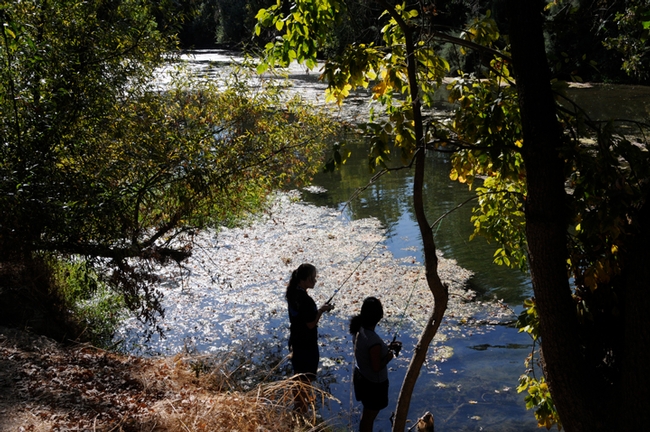
Two students in the animal biology class try their luck at fishing. (Photo by Kathy Keatley Garvey)
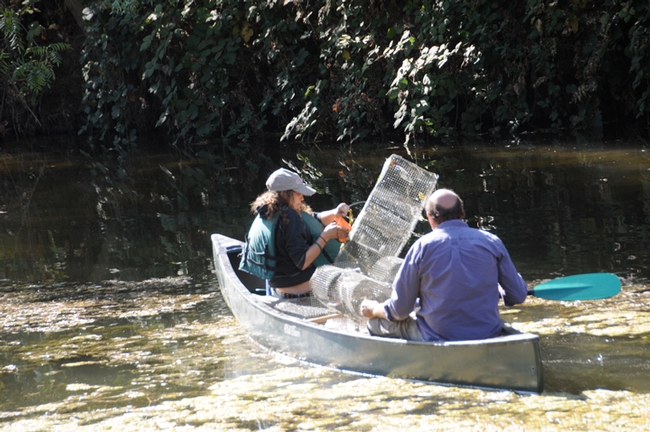
Out with the traps. (Photo by Kathy Keatley Garvey)

Amy Morice, a graduate student in entomology at UC Davis, casts a net in the waters of Putah Creek. She’s the teaching assistant for forensic entomologist Robert Kimsey. (Photo by Kathy Keatley Garvey)

UC Davis forensic entomologist Robert Kimsey (left) paddles a canoe with UC Davis student Andrew Findlaytor of Vacaville (Photo by Kathy Keatley Garvey) (Photo by Kathy Keatley Garvey)
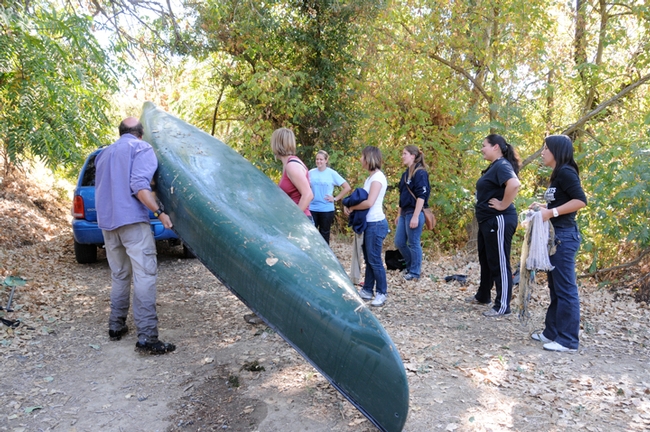
End of the class. Students help Professor Kimsey load the canoe on his vehicle. (Photo by Kathy Keatley Garvey)